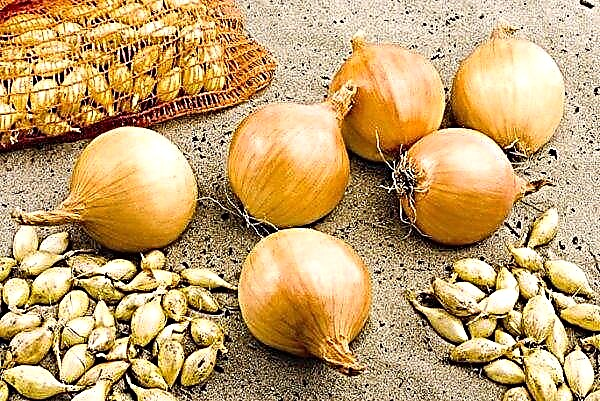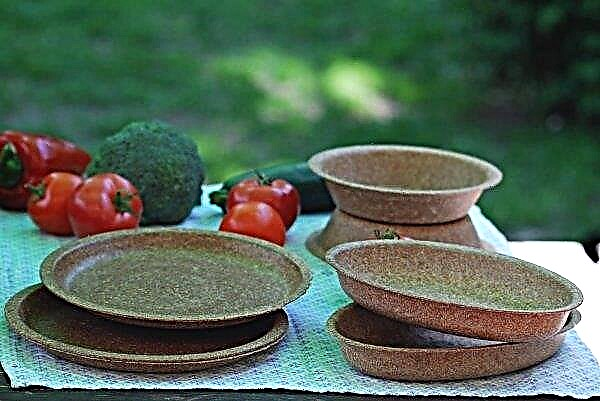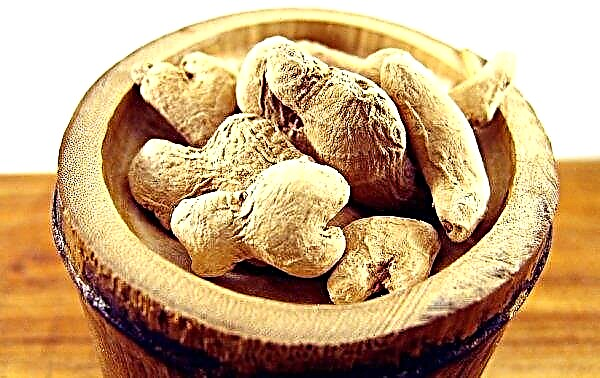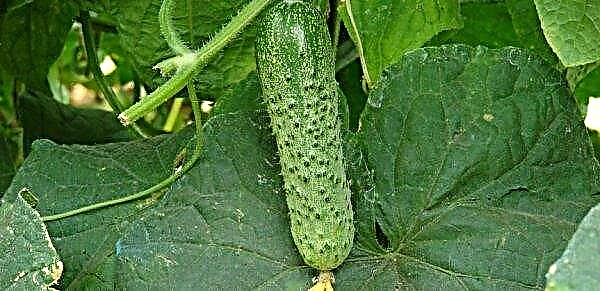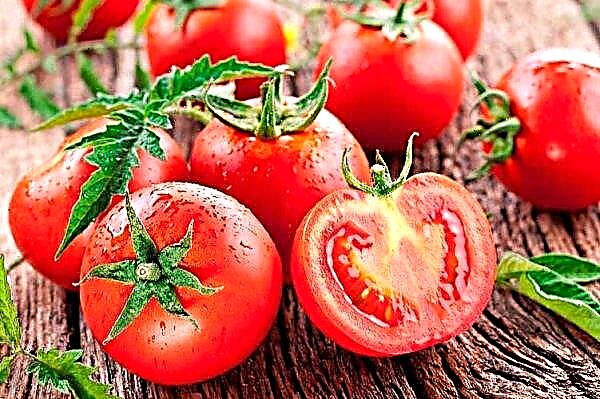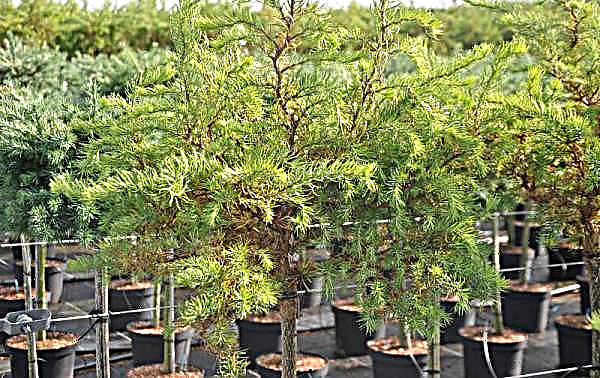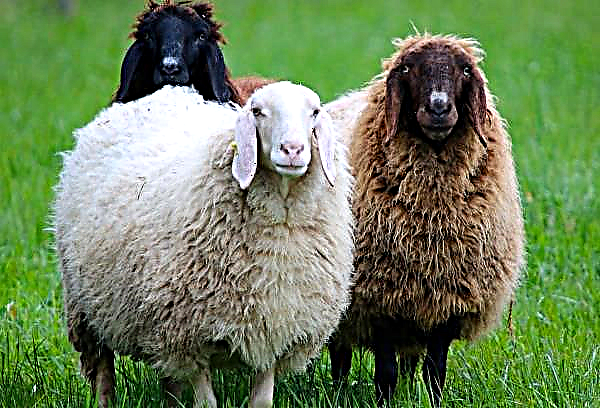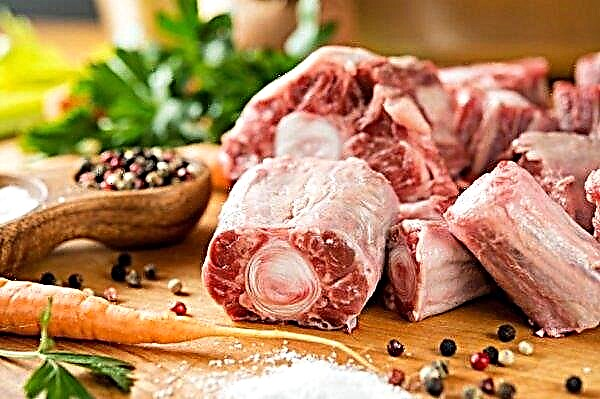The nutrition of a pregnant woman should make up for the elements necessary for the development of the fetus. Therefore, during this period, you should revise your menu. Nutritionists recommend including more vegetables in the expectant mother's diet, as they are a source of essential vitamins and minerals. Cabbage is also on the list of recommended vegetable crops.
The chemical and vitamin composition of cabbage
Cabbage of any variety is a low-calorie vegetable. It contains dietary fiber, carbohydrates, easily digestible protein, very little fat and for the most part consists of water (about 91%). It contains B vitamins, including a considerable proportion of folic acid (B9), ascorbic acid, as well as vitamins E, K, PP, niacin, A and carotenoids.
Did you know? Cabbage is among the ten sources of calcium of plant origin. The presence of a group of vitamins B and a low level of oxalates makes the assimilation of this element by the human body the easiest.
It has a rich set of minerals - potassium, calcium, magnesium, sodium, phosphorus, iron, sulfur, manganese, copper, selenium zinc. Moreover, these vitamins and elements include different types of cabbage, only the ratio of BZHU and their concentration varies slightly. This vegetable also includes enzymes that improve metabolism, and volatile.
Can I eat cabbage during pregnancy?
Pregnant women will benefit from the use of cabbage, in the absence of individual contraindications. During this period, only after learning about pregnancy, you need to revise your diet. The menu should include quality products containing the necessary substances for the normal health of the expectant mother and the proper development of the fetus. Among the recommended products there are various vegetables and fruits, including different types of cabbage - white cabbage, red cabbage, broccoli, cauliflower, kohlrabi, Brussels and Beijing.
It is best to dwell on dishes of fresh vegetables that contain the most vitamins. You should not eat stalks from white cabbage, as they accumulate nitrates. It is also undesirable to use a decoction (broth) of broccoli due to the presence of purines in it, but the boiled vegetable itself will be useful.
You can eat sauerkraut and different types of cabbage in a pickled form, but do not get carried away, and in their preparation should use less salt or vinegar. If a woman expecting a baby has health problems, she must coordinate her diet with her doctor.
In the early stages
In the first trimester, eating cabbage will be beneficial in that it contains folic acid. It is during this period that the fetus has a “bookmark" of all organs and systems, and therefore, the need for this vitamin increases. The need for iron also increases (twice), and calcium - in 1.5. This vegetable is well suited as an additional source of these substances.
Did you know? The Russian Institute of Nutrition examined 100 pregnant women and found that everyone lacked B vitamins and Vitamin A. Half of them lacked Vitamin C. All of these vitamins are in varying degrees in cabbage.
Vitamin C, which is the most in the plant, will help strengthen immunity, and it is in the first months of pregnancy that a woman is most undesirable to get sick. In the first trimester, a woman, often, wants something sour or salty. In such cases, it is preferable to consume sauerkraut, because it perfectly eliminates the symptoms of early toxicosis, strengthens the nervous system and improves metabolism.
In the 2nd trimester
In the second trimester, the feeling of nausea disappears, and the child continues to grow and develop. Cabbage during this period as a low-calorie source of essential vitamins and minerals will fit well in the menu, not allowing you to gain excess weight. At the end of the second trimester, the fetus begins to exert pressure on the internal organs, including the kidneys, which can lead to swelling. Potassium in cabbage will help remove excess water. But sauerkraut or pickled cabbage will not give such an effect, since these products contain a lot of salt. Therefore, if edema appears, you should consume the product in a fresh and stewed form, but it should not be salted. To avoid gaining extra pounds, it is recommended to exclude various “sweets” and rich pastries, smoked meats and fried, sour cream and fat cheeses from food. Cabbage will prevent the gain of excess weight, as it relates to low-calorie vegetables, but perfectly satisfies hunger.
Therefore, if edema appears, you should consume the product in a fresh and stewed form, but it should not be salted. To avoid gaining extra pounds, it is recommended to exclude various “sweets” and rich pastries, smoked meats and fried, sour cream and fat cheeses from food. Cabbage will prevent the gain of excess weight, as it relates to low-calorie vegetables, but perfectly satisfies hunger.
In late terms
In the third trimester, pressure on internal organs increases. In a pregnant woman, constipation may occur. Eating cabbage, especially in the form of fresh salads, will help eliminate them. Vitamin K will contribute to better blood clotting, which is important before childbirth.
Did you know? View "TOgarden parsley» has 8 varieties - cabbage, colored, broccoli, kohlrabi, Brussels, Savoy, kale and Portuguese.
However, the consumption of this vegetable should be reduced with increased gas formation, since the headed species contributes to these processes. A large amount of gas will increase pressure on the organs, which will cause severe discomfort. In this period, fractional nutrition is recommended, up to 7-8 times a day.
Basic rules for use
There are certain rules for using this product during pregnancy:
- Fermented the vegetable must be limited in quantity, since it contains enough salt, which is not entirely acceptable for a woman expecting a baby. But a small amount of snack to the main food does not hurt at all, since this product contains a lot of vitamin C and bacteria useful for the gastrointestinal tract.
- Fresh the vegetable is most useful for the body, but you need to consume it within reasonable limits, otherwise it can cause flatulence.
- Cauliflower For expectant mothers it is also highly recommended on the menu. It relieves fatigue, calms nerves, and activates brain activity. It is usually consumed in stew.
- Red-headed variety It contains anthocyanin pigment, which improves cardiovascular activity. Such a vegetable must be consumed in its raw form, since after heat treatment its beneficial properties are sharply reduced.
- White varieties consumed in any form: boiled, steamed, raw, fried, stewed. Moreover, they are stored longer and from them you can make a lot of blanks for the winter.
For lactation, cauliflower, broccoli and Peking cabbage are most useful, and white cabbage is best administered no earlier than 3 months after birth. First, you need to eat this product in a stewed or boiled form, in small quantities. If the baby does not have problems with the gastrointestinal tract, then the amount can be slightly increased. If you have any problems with the intestines, the reception should be discontinued.
What can you combine cabbage with?
White-cream goes well with other vegetables, meat and cereals. Moreover, this vegetable contributes to better absorption of food. Stewed cabbage (white and cauliflower) is good to include in food, along with products containing starch - bread, potatoes. She admits the presence of fats and greens, she makes good pies. This product goes well with cheese. This vegetable goes well for cooking borsch, vegetable stew, with meat. But this fresh product is especially useful - in salads with other vegetables (cucumbers, peppers) and herbs.
She admits the presence of fats and greens, she makes good pies. This product goes well with cheese. This vegetable goes well for cooking borsch, vegetable stew, with meat. But this fresh product is especially useful - in salads with other vegetables (cucumbers, peppers) and herbs.
Contraindications and harm
Such a useful vegetable as cabbage has no particular contraindications, but in some cases the consumption of this product must be limited. When using this product in a pickled form, remember the high salt content and include in limited quantities on the menu. With exacerbations of gastrointestinal diseases (gastritis, duodenal ulcer), pancreatitis, diseases of the liver and thyroid gland, it is better to consume this vegetable not in fresh, but in stewed form, in quantities strictly recommended by the doctor.
Important! Eating large quantities of fresh cabbage can cause flatulence and pain in the digestive tract during pregnancy.
Household storage rules
The duration of storage of white cabbage depends on the variety. So, later varieties with a dense leaf structure are stored longer. Such varieties are distinguished by higher stubbornness, since initially they contain more dry elements (fiber and sugar), therefore, their level of vitamin C decreases slightly over time. Moreover, sucrose levels increase over time. Experts recommend taking several varieties for storage so that there is always a fresh product during the cold period.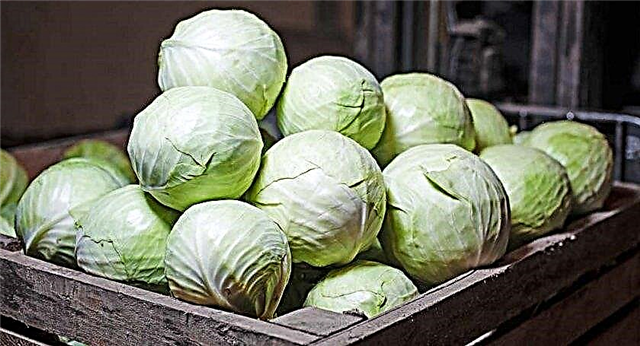
When harvesting vegetables "for good", you must keep in mind:
- mid-season can be stored 2.5-3 months;
- late ripening - not more than 5 months;
- possessing high keeping quality - up to 7 months.
The specimens selected for long-term storage should contain 2-3 covering outer leaves without any damage. If the heads of cabbage have white leaves, then they will not be stored for a long time. For preservation, a subfloor, cellar or basement is well suited. Heads are best placed on shelves or on the floor. You can also wrap a head of cabbage in a cling film.
To do this, cut the cob by 1-2 cm and tightly wrap the vegetable in a film so that there are no wrinkles and air does not get inside. Humidity in the room can cause rot, so you need to periodically ventilate. The optimum temperature regime for storage is + 1 ... 0 ° С, humidity 90–95%. In the refrigerator, storage is carried out in the department for vegetables. Broccoli and color - it is better to freeze. Broccoli is a very useful and necessary product during pregnancy! Any kind of cabbage contains vitamins and minerals necessary for the development of the fetus, the use of which will be useful throughout pregnancy. However, one should not get too carried away with increased gas formation, exacerbations of pancreatitis and gastrointestinal tract diseases. You should not get carried away with pickled and pickled products due to the large amount of salt in it.
Broccoli is a very useful and necessary product during pregnancy! Any kind of cabbage contains vitamins and minerals necessary for the development of the fetus, the use of which will be useful throughout pregnancy. However, one should not get too carried away with increased gas formation, exacerbations of pancreatitis and gastrointestinal tract diseases. You should not get carried away with pickled and pickled products due to the large amount of salt in it.

